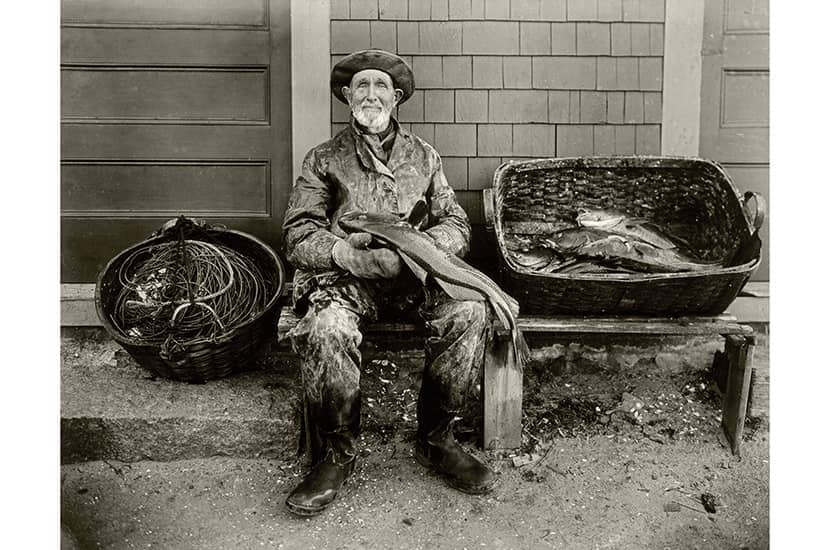A Tatler photographer once told me that the secret to taking a good photo was the three Ts: tum, tits, teeth. Suck it in, push ’em out, show your pearly whites. Leaving aside David LaChapelle’s portrait of Pamela Anderson, there’s a shortage of Ts in Phillip Prodger’s Face Time. This looks likea coffee-table book but doesn’t bark like a coffee-table book. On first flick through, I found the pictures desultory, even depressing. I was expecting more of a Condé Nast vibe. Glossy and glossier. On second approach, taking text and pictures together, it became a more interesting beast.
Prodger is a former head of photography at the National Portrait Gallery and the founding Curator of Photography at the Peabody Essex Museum in Salem, Massachusetts. He has thought deeply about photography and portraiture in all its masks and guises. This isn’t the usual greatest hits album, a book to idle through one afternoon between Christmas and New Year. There are no photographs by His Royal Airbrushness Mario Testino. Where the big names do appear, it is often in uncharacteristic costume. Cecil Beaton is represented not by Audrey Hepburn, but by a charlady. In a series of three photographs, ‘From Charwoman to Dowager’, taken in the 1930s, Beaton reveals the retoucher’s art. A dumpy subject is transformed into a slender duchess. The middle photo is annotated with Beaton’s commands from the dark room: ‘lighten hair’, ‘make face symmetric & young’ and so on.
Prodger points to a paradox: most cameras are set to take a photograph in 1/60th of a second. ‘Considering there are 86,400 seconds in a day, and 27,000 days in the average lifespan, this means a single photograph might capture just 1/140 billionth of a person’s time on Earth.’ A photographer’s aim is ‘to condense all that is worth knowing about a person — aspirations and fears, talents and shortcomings, humour and affect — into one such microscopic slice of their existence’. Anyone who has ever had to choose a photograph for a dating website, a corporate headshot or a byline pic will know the difficulty.
Prodger’s selection is surprising and playful and the essays which begin each section are eye-opening. He gives us Hiroshi Sugimoto’s portrait of the Queen (really her waxwork at Madame Tussauds) and a picture from Anderson & Low’s ‘Manga Dreams’ sequence in which subjects are styled like Japanese manga warriors, princesses and villains. We see Mark Zuckerberg’s VR avatar and pretty (and pretty eerie) synthetic faces created by AI.
The Iranian artist Newsha Tavakolian responds to the regime’s prohibition of female singers performing alone or on stage with a series of sitters singing only for the camera. Mahsa Vahdat’s eyes are closed; all the life is in her lips. The photographer Taryn Simon creates a Frankenstein’s monster from bits of despots and dictators: the lower eyelid bags of the Lebanese cleric Mohammed Hussein Fadlallah, the legs of Bashar al-Assad.
More cheerfully, Dolly Parton is here represented by her attempt at the ‘Meme Challenge’, in which celebrities and online mortals picked selfies that best represented their LinkedIn (professional), Facebook (friendly), Tinder (flirty) and Instagram (phoney) selves. I liked John Baldessari’s photograph ‘Numbered Legs’, a frieze-like portrait of editors on the catwalk front row, their faces blanked out but their immaculate shins and shoes on show.
The Tatler photographer had one other piece of advice. For a sunny smile, don’t say ‘cheese’, say ‘shit’. Say it quietly, but it works.







Comments